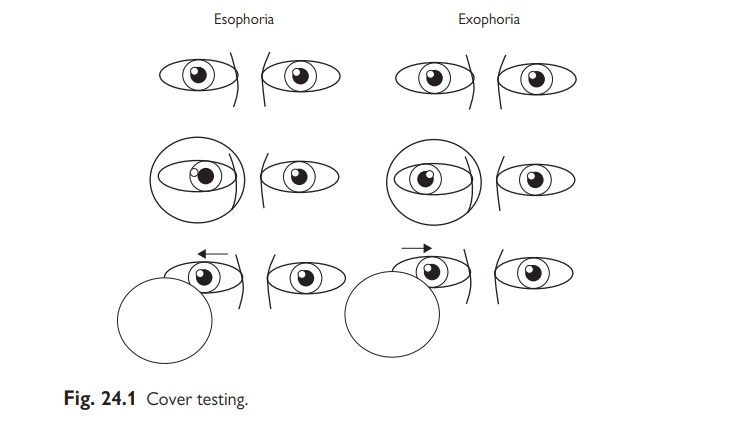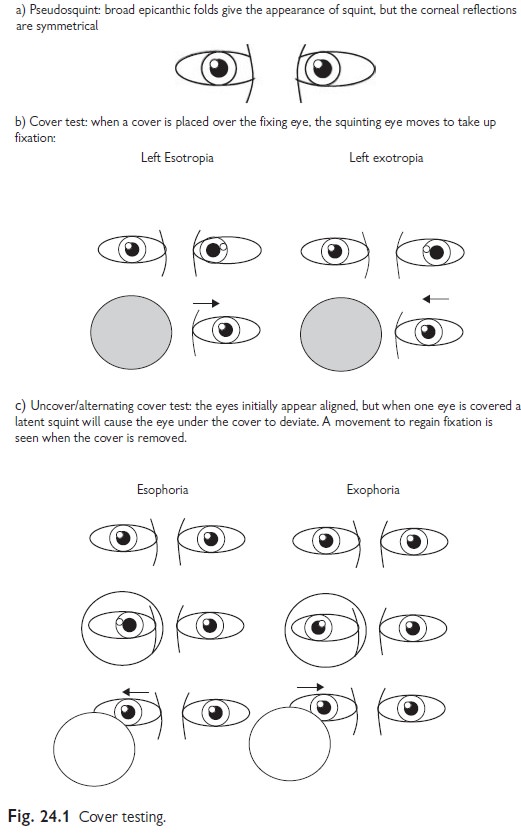Chapter: Paediatrics: Special senses
Paediatrics: Vision screening in the UK

Vision screening in the UK
Neonatal examination
•
To
detect congenital ocular abnormalities, e.g. cataract, corneal opacities,
microphthalmia, glaucoma and retinoblastoma.
•
Ask
about family history of these disorders.
•
Use a
(bright) ophthalmoscope to examine the eye and red reflex.
•
An
indistinct red reflex can be caused by cataracts/corneal opacities.
•
Retinoblastoma
or abnormal retina can cause a white reflex.
•
The
red reflex may be darker in Asian and Afro-Caribbean babies.
•
Refer
on if in doubt.
Community screening
•
At 6wks: GP asks parents about their baby’s
visual behaviour. Baby should be able
to fix and follow a face and large toy. Red reflexes checked with an
ophthalmoscope. Squint assessment.
•
At 7–8wks: health visitor observes visual
behaviour. Parents advised of what to
look for regarding expected future visual development.
•
At 4–5yrs: orthoptist checks monocular visual
acuity and ocular alignment, children
achieving <6/9.5 are referred.
Secondary screening
Orthoptic
programme for children referred by par-ents, health visitors and GPs whenever a
concern regarding vision or squint is raised.
Eye examination techniques
Visual examination
•
6–8wks: baby should fix and follow a
bright target and your face.
•
4mths: baby should not squint and should
fix and follow toys.
•
6mths: baby should reach out for toys.
•
2–3yrs: use picture charts (e.g. Kays
pictures).
•
4–5yrs: use letter charts (e.g. Snellen
+/– matching letter card).
Eye movements
•
Use a
bright toy to attract attention and move in a ‘H’ shape to assess the action of
each muscle.
•
Cover
test for squint assessment (see Fig. 24.1).

Anterior segment examination
•
Use
ophthalmoscope set on +20 for a magnified view of the front of the eye, click
in the cobalt filter for fluorescein examination.
•
Instill
anaesthetic drops prior to examination if the child is in pain.
•
Check
the diameter of the corneas are equal and that the light reflection from each
is bright.
•
Check
the red reflex in both eyes is equally bright.
Posterior segment examination
•
Ask
the child to look at an interesting target over your shoulder when trying to
examine the optic disc.
•
Dilating
drops are safe to use, but will interfere with neuro-
observations for 24hrs: use 1% cyclopentolate (if <1yr old use 0.5%)
Related Topics